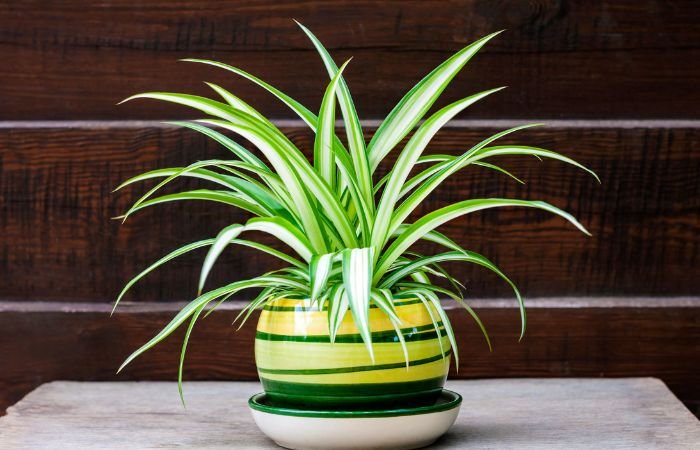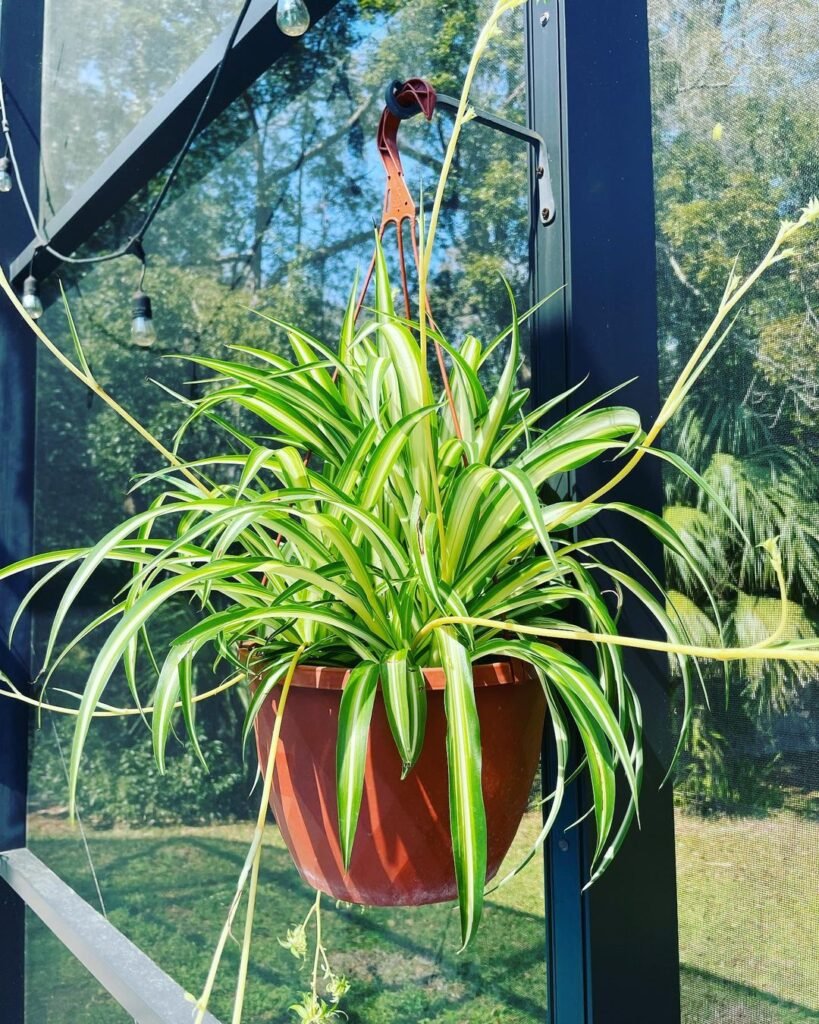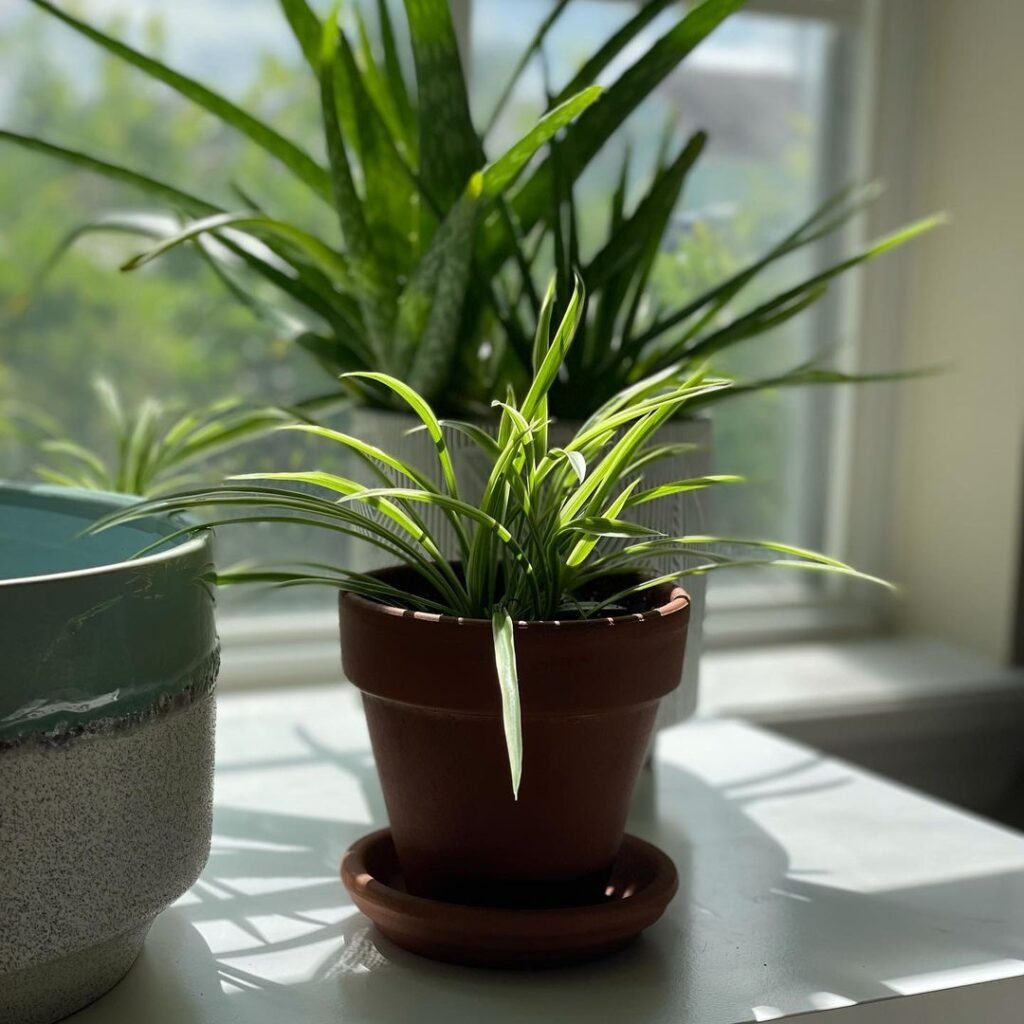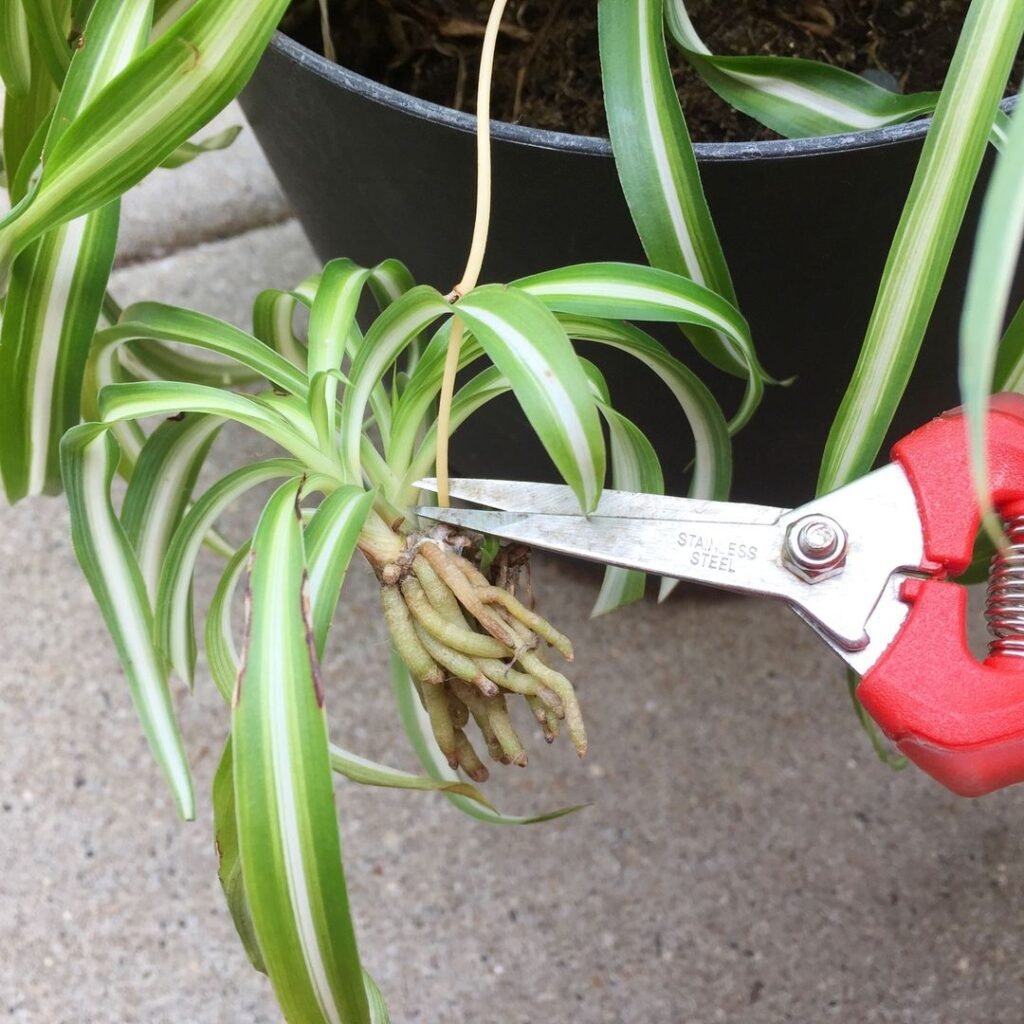Are you looking to add a touch of greenery to your indoor space? Spider plants (Chlorophytum comosum) are an excellent choice for plant enthusiasts of all levels. Not only are they visually appealing, but they are also easy to care for, making them a popular choice for both novice and experienced gardeners. In this comprehensive guide, we’ll explore Spider Plant care and all the essentials to keep your Spider Plants healthy and thriving.

Spider Plant Care Basics
Taking care of Spider Plants can be a breeze when you understand their specific needs:
1. Light Requirements:

- Spider plants are known for their adaptability to various light conditions. They thrive in bright, indirect sunlight but can tolerate lower light levels.
- Avoid direct sunlight, as it can scorch their delicate leaves.
2. Watering Needs:

- Keep the soil evenly moist but not waterlogged. Water thoroughly when the top inch of soil feels dry.
- During the growing season (spring and summer), you may need to water more frequently. Reduce watering in the winter months.
3. Temperature and Humidity:

- Spider plants prefer temperatures between 60°F to 75°F (15°C to 24°C). Protect them from drafts and extreme temperature fluctuations.
- They can adapt to average indoor humidity levels, but they thrive with a bit of extra humidity. Consider misting their leaves or using a humidity tray.
4. Soil:

- Use a well-draining potting mix. A mix formulated for houseplants or African violets works well.
- Repot your Spider Plant every two to three years, or when it outgrows its current pot.
Spider Plant Maintenance Tips
Here are some Spider Plant maintenance tips to ensure your plant stays healthy and happy:
1. Pruning:

- Remove brown or yellowing leaves promptly to encourage new growth.
- Spider plants occasionally produce baby plantlets (pups) that can be removed and potted separately to grow new plants.
2. Fertilizing:

- Feed your Spider Plant with a balanced, water-soluble fertilizer every 2-4 weeks during the growing season. Reduce feeding in winter.
3. Repotting:

- As your Spider Plant matures and produces more pups, consider repotting it to give each plant enough space to grow.
Spider Fern Plant and Small Spider Plant

Spider Fern Plants and Small Spider Plants are variations of the classic Spider Plant. They have similar care requirements but are smaller in size, making them perfect for compact spaces.
When to Bring Spider Plants Inside

If you’re growing Spider Plants outdoors, it’s crucial to bring them inside when temperatures drop below 45°F (7°C) to protect them from frost.
Do Spider Plants Need Sun?

While Spider Plants do well in bright, indirect sunlight, they can tolerate lower light conditions, making them suitable for various indoor spaces.
Where to Put Spider Plant

Spider Plants are versatile and can be placed in hanging baskets, on shelves, or as floor plants. Choose a spot that suits your home decor and lighting conditions.
Wrapping Up
Mastering Spider Plant care, whether you have a classic Spider Plant, Spider Fern Plant, or Small Spider Plant, is a rewarding and enjoyable experience. These plants not only add beauty to your indoor space but also purify the air. With the right care and attention to their specific needs, your Spider Plants will thrive and continue to brighten your home. So, go ahead and welcome these lovely green companions into your living space – they’re sure to bring joy and tranquility.
Pingback: All About Aglaonema Plants: Care Tips for Gorgeous Greenery
Pingback: 6 Types of Spider Plants to Grow in Your Home -
Pingback: Top 12 Non-Toxic and Low Maintenance Pet-Friendly Houseplants for Your Home -
Pingback: The 18 Best Plants For Bedrooms -
Pingback: Spider Plant Care Simplified: Your Guide to Healthy Chlorophytum comosum - Solano Garden